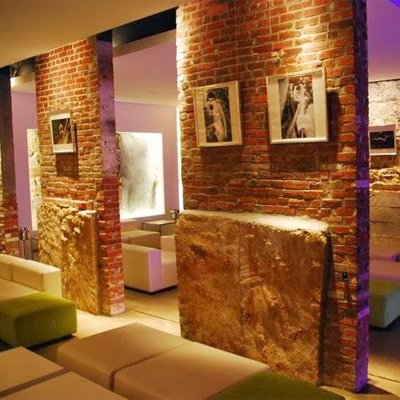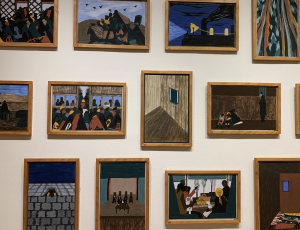In an age of commercialization, it is easy to see why people find comfort in the untarnished nature of indie artists. There is an underlying intimacy in their exhibitions––a camaraderie in their fight against the oversaturation of the art world. This sense of authenticity can be found in the art displayed at Event BKE’s latest exhibit, Imagine Color.
Imagine Color is a series of monthly pop-up installations showcasing up-and-coming artists. Located at L2 lounge, the secluded space is complimented by a bevy of well-dressed guests and free-flowing drinks. The exhibit is appropriately named, as the exploration of color is the one commonality between the diverse artists, other than the fact that they are all under 40 years old. The frizzy-haired painter archetype has been booted out of the picture, replaced by the art school graduate with a large hat and 3K Instagram followers. Their work is a reflection of the modern movement towards emotionality as opposed to technical precision in art.
The organization of the exhibit allows viewers to experience each series of works individually, à la stops on transit, as the open floor lounge is divided by interior walls, with each section dedicated to a different artist. On the way through, one piece jumps out immediately, even under the ambient lighting. It is “Odd Focus” by Allan Flott, which features black paint strewn across a red background in a Pollockian fashion. His entire series of abstract expressionism, entitled “Love & Hate,” characterizes what is commonly perceived as millennial attitude—raw, emotional, and unconstrained. Flott works with canvas as well as clothing, yet as much as his paintings connect to viewers, it would raise eyebrows to say that his acrylic-splattered jean jackets share the same level of artistry as them. However, one can appreciate the bleeding of art into fashion, or fashion into art, as another quirk of contemporary art culture.
Sofia Chitikov’s pieces were a little more critically mixed. Her “Dragons and Unicorns” series features highly-textural wall sculptures of resin, acrylic, and marker. Although the bursts of color and indecipherable text is perplexing, there is a method to the madness, a harmony in the disorder. Like Flott’s work, the abstract nature of Chitikov’s art leaves it open to interpretation by viewers. However, her choice to operate on 1-square-foot surfaces is somewhat limiting, as detailed works usually benefit from scale. Moreover, her “Unicorn’s Projection” piece, which utilizes the frame, seems too conceptually safe, and does not show Chitikov stepping out of her aesthetic comfort zone.
Turning the corner, Stephanie McNutt’s acrylic pieces greet viewers with a degree of ambivalence. Much like the model-esque girl browsing her phone on the street, the muted color scheme and ink lines of the paintings draw attention without calling for it. After experiencing Flott’s and Chitkov’s explosions of color, McNutt’s art acts as palate cleanser. There is an evolution in the layering of shapes and textures that can only be noticed on the second look, especially in the piece “Dog Days of Summer,” which has pops of red upon coats and coats of white and grey. McNutt’s work is intricate, not to be viewed hastily, and is more likely to intrigue than immediately astound.
The last room featured the work of Ashley Chanel Wilson, a photographer who specialized in portraiture. The photos were nice and well-shot, but there didn’t seem to be an overall theme among them, nor were they particularly emotionally impactful. However, not everything has to be “high art” to have aesthetic value. Wilson’s pieces would work well as the cover of a lifestyle magazine.
Whether the pieces become pioneers of a movement or just another drop in the swamps of Instagram mediocrity, exhibits like these provide independent artists with a sanctuary. In tandem, not only can anyone be an artist––with the installations being open to the public––anyone can be an art critic. Under the cloudy skies of social disillusionment, the democratization of art and art criticism in Imagine Color is a shining light.





